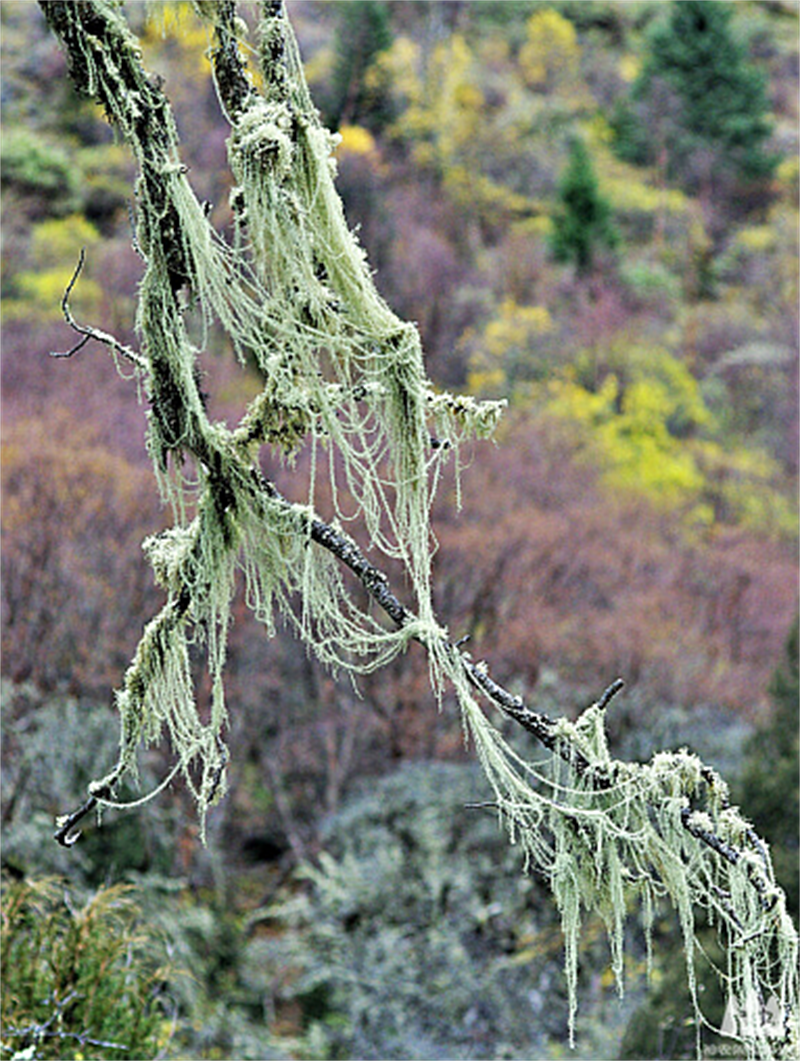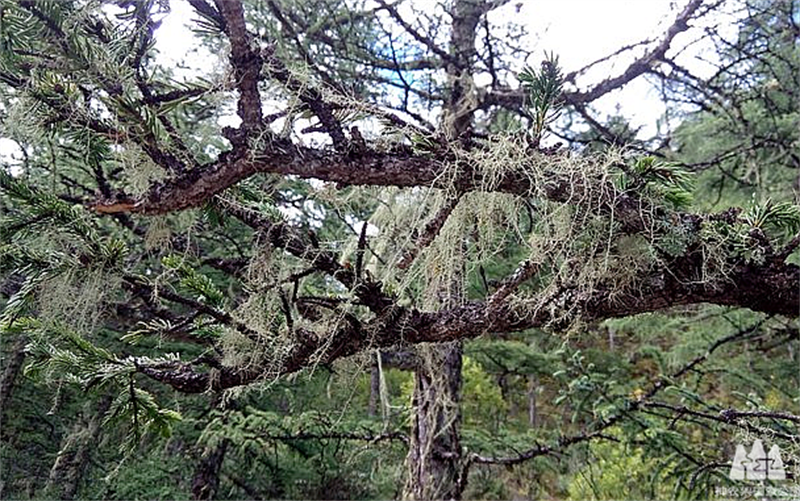Usnea orientalis: Symbiosis with Fungi and Algae
Updated:2024-01-02 Source:Shennongjia National Park
When entering the primeval forest in Shennongjia, you will not only be greeted by a large stretch of dense forest that blocks out the sky, but also by the gauze-like Usnea orientalis in the forest.

Hanging on the branches of tall trees like spruce and fir, Usnea orientalis is always drifting in the wind, which adds a touch of mystery and fantasy to the forest.

You will find that Usnea orientalis exhibits a unique feature of filiform texture when examining closer. As a bush of green stiff threads attached to the trunks and branches of trees, it is hard to tell where their roots, stems, and leaves are. Usnea orientalis, a species of lichen, is a symbiotic organism comprising a fungus and an alga. Although Usnea orientalis belongs to the lower organism that exhibits simple body structure, such species surprisingly shows great complexity in its biological combination. A lichen is a magical composite organism that results from a mutualistic relationship between an alga (the photosynthetic organism) and a fungus. However, it doesn’t mean that any kind of algae and fungi can be combined to form lichens, in that only over a span of tens of millions of years can the algae and the fungi form a symbiotic partnership. Fungi provide shelter and absorb water and mineral nutrients for algae, and algae prepare carbohydrates for fungi via photosynthesis using their chlorophyll. In this way, two organisms form a symbiotic relationship that is mutually beneficial for each other, and neither can survive without the other. Since Usnea orientalis has no rhizomes or leaves, it absorbs airborne waters like a sponge. Such species usually grows in remote and densely forested mountains thick with fog, and their filament-like structures resemble a large net intending for capturing tiny drops of liquids in the air.

Usnea orientalis’s nickname in Shennongjia, “monkey noodles”, comes from the fact that golden snub-nosed monkeys feed on Usnea orientalis during winter when fresh fruits and tender leaves are not available. When severe cold hits and affects plant growth,Usnea orientalis still grows tenaciously because of mutualistic relationship of fungi and algae. Owning to its ecological adaptability to withstand the severe cold, Usnea orientalis has become an indispensable part in the food chain, which helps golden snub-nosed monkeys defend against starvation and survive in winter. More than that, compared with gymnosperms, Usnea orientalis has lower fiber content and is easier to digest for golden snub-nosed monkeys. However, it is likely that the taste of Usnea orientalis is not that pleasant, because golden snub-nosed monkeys tend to choose other type of food when the spring comes. With plentiful food choices, the amount of Usnea orientalis consumed by golden snub-nosed monkeys will be dramatically reduced. It is for this reason that many Usnea orientalis are preserved in the primeval forests of Shennongjia to form such the beautiful scenery.(By Wang Lei)
Species Archives:
Usnea orientalis
Lecanorales
Parmeliaceae
Usnea
Description:
Usnea orientalis is a type of lichen with filament-like structures hanging downward. It appears greyish-white throughout with many thin and short side branches. Usnea orientalis is often found growing on the trunks and branches of trees like pine trees.
Distribution:
Heilongjiang, Jilin, Sichuan, Yunnan, Guizhou, Tibet, Zhejiang, Fujian and other places. Copyright Shennongjia National Park
Address:36 Chulin Road, Muyu Town, Shennongjia Forestry District, Hubei Province 鄂ICP备18005077号-3
Address:36 Chulin Road, Muyu Town, Shennongjia Forestry District, Hubei Province 鄂ICP备18005077号-3
Email:2673990569@qq.com
Phone:0719-3453368
Phone:0719-3453368


TOP

